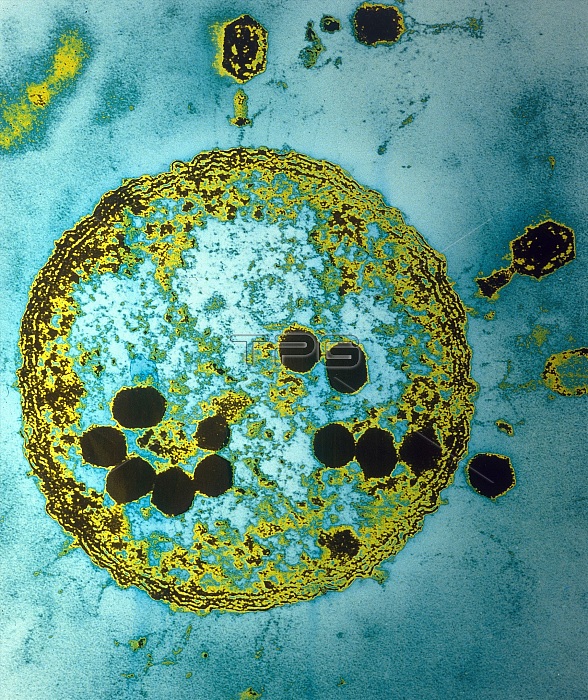
Color-enhanced transmission electron micrograph (TEM) of newly synthesized and assembled T2 bacteriophages (black ovals) within the bacterium Escherichia coli. Bacteriophages are viruses that infect only bacterium, some being specific to a single species. Having no reproductive machinery, they commandeer the bacteriums to ensure self-replication. They attach themselves to the surface of a bacterium, injecting their complement of DNA or RNA into the host cell. The host's DNA is instructed to code for bacteriophage replication and within 20 minutes the progeny is synthesized and wrapped in a protein coat. The bacterium, however is usually destroyed by bursting (lysis). In this micrograph, the bacterium is seen in cross-section, with the bacteriophages attacking the bacterium (at top and right). The ones that are still dark have not yet injected their load of DNA into the bacterium; the empty one at right has already done so. The solid round objects inside the bacterium are new virus particles. The much smaller, granular particles in the bacterium are ribosomes, on which protein synthesis takes place.
| px | px | dpi | = | cm | x | cm | = | MB |
Details
Creative#:
TOP22217107
Source:
達志影像
Authorization Type:
RM
Release Information:
須由TPG 完整授權
Model Release:
N/A
Property Release:
No
Right to Privacy:
No
Same folder images:

 Loading
Loading